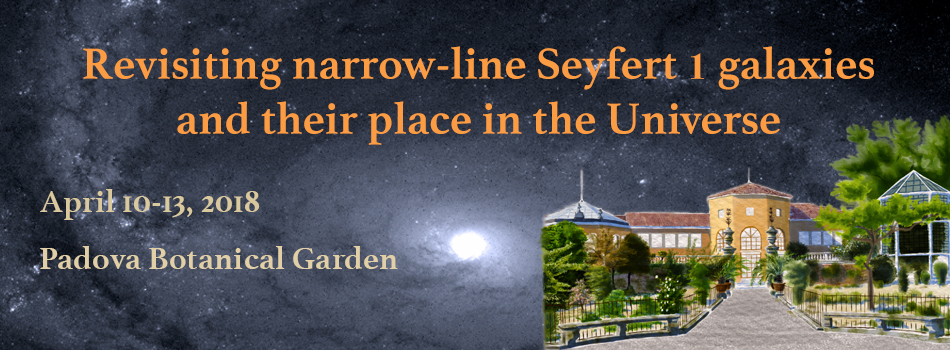Speaker
Description
Two major challenges to unification schemes for AGN activity are the existence of NLS1s and the existence of “changing-look” (CL) AGNs. It is therefore important to look at the relationship between these two phenomena. AGNs can drastically change their spectral appearance in the optical (changing Seyfert type) and/or in the X-ray region. We illustrate the CL phenomenon with our multi-wavelength monitoring of the typical CL object NGC 2617 and discuss its properties compared with NLS1s. There are only a few examples of CL NLS1s and they are mostly changing look only in the X-ray region. Only one NLS1, PS16D (Blanchard et al. 2017), is known to have changed to a broad-line Seyfert1 (BLS1). It has been proposed that this could be a case of a tidal-disruption event (TDE). Low-ionization BLRs have a flat geometry (Gaskell 2009). If, NLS1s are flattened BLR geometries seen face-on (e.g., Decarli et al. 2011), then we will see a changing look only if the orientation of the BLR and accretion disc changes because of a major disruption such as a TDE or a close passage of a secondary black hole. If, as we have suggested (Oknyansky et al. 2015), the hot dust is in a bi-conical outflow, several observational tests can be proposed. Firstly, for NLS1s the lags of H beta and the near IR behind optical/UV continuum variability will be similar, rather than the IR lag being a factor of 3 – 10 times larges as seen in normal BLS1s. The IR response functions should not show the double peaks that are found for some BLS1s. We predict that NLS1s showing a changing look in the optical should be very rare; only X-ray or TDE CL cases should be seen, as seems to be the case. An interesting problem is why NLS1 are less variable in UV and optical regions yet strongly variable in X-ray (Klimek et al. 2004). If NLS1s include both high Eddington rate accretion and low-inclination AGNs (e.g., Peterson 2011) then a significant fraction of NLS1s could be obscured and would not be identified as NLS1s. CL cases might happen more often if there is dust sublimation following a strong increase in the optical luminosity that causes some obscured NLS1s to become unobscured.
Motivation
We ask the grant for a co-author of the work young Ph.D. Konstantin Malanchev (27 years old). If the first author Victor Oknyansky wouldn't find funds for this trip (he waits a decision from Russian Foundation for Basic Research), than Konstantin will present this work. Unfortunately Konstantin cannot find any funds for the trip from other sources.
| Grant | yes |
|---|

